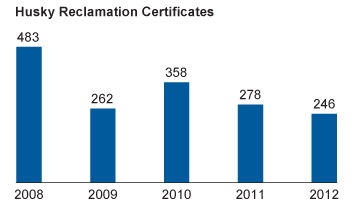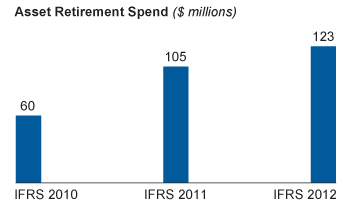Land and Habitat

Land Stewardship is Fundamental to Operations
During operations, the Company makes every effort to steward the land in its care and then return it to its pre-disturbance condition.
Land Management
If land is disturbed during Company operations, Husky’s objective is to remediate and reclaim the area.
Land is restored so that it can support similar ecological functions to those that existed before any disturbance. This could include re-contouring sites, replacing soil layers, and re-establishing vegetation in a timely manner.
All reclamation sites are submitted for regulatory approval and land owner and/or occupant review, and Husky has achieved a 98 percent approval rate on its submissions. Over the past 10 years, the Company has certified 3,777 sites and returned more than 18,000 acres of land to its pre-disturbance condition.
The Company has averaged more than 300 certificates a year over the past five years. New reclamation criteria requirements were introduced in 2010 and Husky is adapting to the new changes through its assessment process. To align with the new requirements, the Company has completed further analysis of abandoned sites, to maintain a high success rate in application approvals. Last year, the Company achieved a 98 percent success rate on its applications.

Asset Retirement
The Company continues to use its Environmental Performance Reporting System to track its liabilities at the site level and adjust estimates as new information becomes available. End-of-life asset retirement obligations (ARO) are tracked and disclosed on a quarterly basis, complying with financial reporting regulations. This allows the Company to better estimate its obligations and account for appropriate financial resources. Husky records the amount spent on reducing its liabilities, including abandonment, reclamation and remediation activities.
In 2011-2012, the Company completed a review of its liability and management structure and liability adjustments were made to align with accounting standards introduced by the International Financial Reporting System (IRFS).

